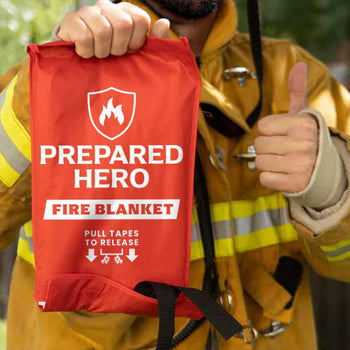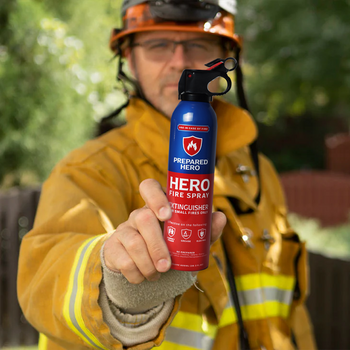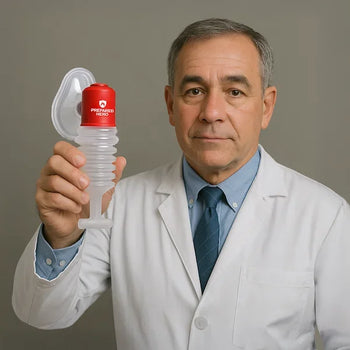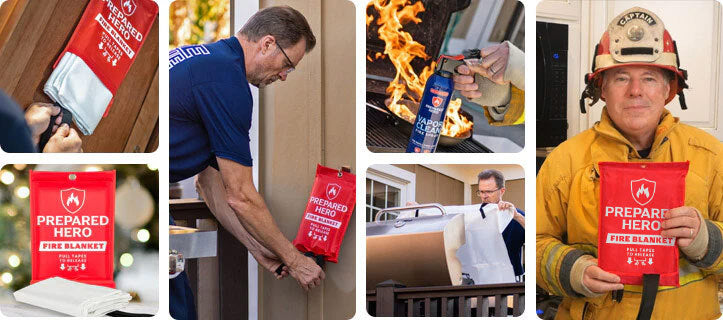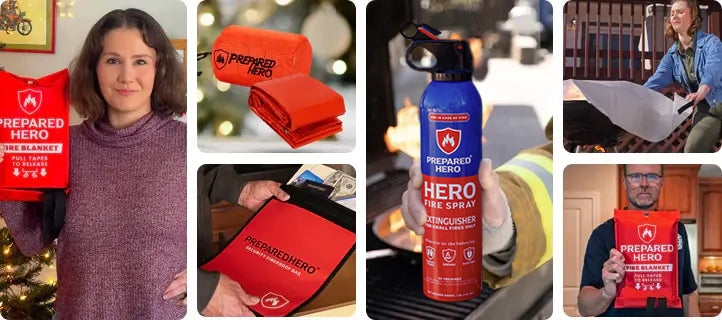Where you put your smoke detectors matters just as much as installing them. Proper placement makes sure they can detect...
It’s easy to overlook carbon monoxide buildup because you can’t see, smell, or taste it. But here’s the good news: with the right tools and habits, you can catch it before it becomes a serious problem. In this guide, we’ll break down how to detect carbon monoxide at home and what signs to watch for.
Why Carbon Monoxide Is Dangerous
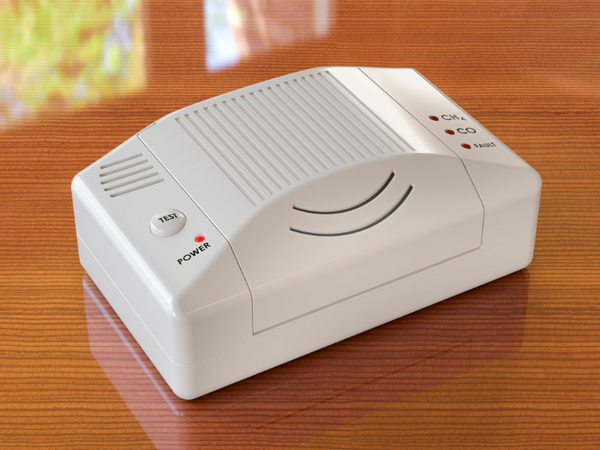
Carbon monoxide (CO) is dangerous because you can’t see it, smell it, or taste it. It sneaks into your home without warning, which is why it’s called the silent killer. CO is released when fuels like gas, wood, or oil burn without enough oxygen. This can happen if an appliance breaks down, a vent gets blocked, or someone runs a car in a closed attached garage.
The real danger? You won’t know it’s there until you start feeling sick. CO poisoning symptoms feel a lot like the flu (headaches, dizziness, nausea), so people often ignore them. Plus, the gas can be deadly once it builds up.
Every year, more than 400 people in the US die from accidental CO poisoning, and over 100,000 end up in the emergency room. But the good news is, it’s preventable. You just need to stay on top of your appliance maintenance and install carbon monoxide detectors in the right spots.
Those CO alarms are your early warning system. Without them, you’re flying blind. It’s a simple step that can save lives. CO might be sneaky, toxic, and deadly, but you can stay safe with the right tools.
Signs of Carbon Monoxide Leak

Carbon monoxide is dangerous because you can’t see, smell, or taste it. It can also build up in your home without warning. That’s why it’s so important to know what to look for. Here are some common signs of a carbon monoxide leak:
Strange Air
If the air in your home feels stuffy or stale, carbon monoxide might be building up. CO can also cause unusual humidity. You might notice fogged-up windows or moisture on cold surfaces, especially near fuel-burning appliances. That’s not normal and shouldn’t be ignored.
Weird Flames
Check the flame on your gas appliances. A strong, healthy flame should be blue. If it's yellow or orange, that usually means something’s wrong with the combustion. This could be a sign of carbon monoxide buildup.
Soot, Stains, or Smoke
Dark, sooty marks or yellowish-brown stains around your boiler, stove, fireplace, or chimney are red flags. Smoke collecting in rooms is another serious warning. These mean the gas isn’t venting properly.
Pilot Light Problems
Are your pilot lights going out? This might mean incomplete combustion, which produces carbon monoxide. Flames that flicker or flare when a door or window opens are also signs that something’s off.
Appliances Acting Strange
If your fuel-burning appliances are slower than usual or if there’s a back-draft when you open a window, you could be dealing with CO. Fires burning oddly slowly or appliances acting weird should be checked.
People (and Pets) Feel Sick
One of the clearest signs is how people and pets feel. Symptoms can include headaches, nausea, dizziness, confusion, chest pain, and shortness of breath. Some people even pass out. These symptoms often go away when you leave the house and return when you come back. If that happens, get outside immediately and call for help.
Animals often feel the effects before humans. If your pet suddenly gets sick or acts tired for no reason, it could be CO poisoning. Pay attention.
If multiple signs show up—stains, bad flames, weird symptoms—it’s time to get out and call emergency services. Carbon monoxide can be deadly fast, but knowing the warning signs can help you stay safe.
Carbon Monoxide Poisoning Symptoms

Carbon monoxide poisoning can sneak up on you because the gas has no smell, taste, or color. The symptoms often feel like the flu, which makes them easy to ignore. Here are the most common signs to look out for:
Headache
One of the first signs of CO poisoning is a dull, persistent headache. It’s usually mild at first, but it can get worse with more exposure. You’re likely getting poisoned if it doesn’t go away while you’re at home.
Nausea and Vomiting
You might feel like you’re coming down with a stomach bug: nausea and vomiting. The tricky part is that it feels like the flu, so people often ignore it. If it comes and goes depending on where you are, pay attention.
Dizziness
CO affects your brain quickly, so feeling lightheaded or dizzy is common. This can make you feel off balance, like you might faint. If it happens while you're using a heater or gas appliance, don’t ignore it.
Weakness
Does your body suddenly feel heavy or tired, even after resting? It could be a sign of CO exposure. This kind of weakness can affect your arms and legs and make everyday tasks feel harder than usual.
Confusion
Your thinking might get foggy. It might also feel like you’re spaced out or not fully alert. Some people have trouble concentrating or making decisions. These are ways CO messes with your brain.
Chest Pain
People with heart conditions may feel chest pain when exposed to carbon monoxide. Even those without heart problems might notice tightness or discomfort in their chest. It happens because the heart isn’t getting enough oxygen.
Shortness of Breath
Breathing can become hard, especially if you’re moving around or climbing stairs. If you feel out of breath doing things that normally wouldn’t be a problem, CO could be the cause.
Fainting
In more serious cases, CO poisoning can cause people to pass out. This is a major warning sign. If someone faints and you suspect CO, go outside and call for help immediately.
Blurred Vision
You may notice your vision becoming fuzzy or unclear. This happens when your brain and eyes aren’t getting the oxygen they need because of carbon monoxide.
Tiredness
Feeling extremely tired or like you can’t stay awake could be a sign of CO buildup. This is especially dangerous if it happens while you’re already asleep or resting, since you might not wake up in time.
Carbon Monoxide Sources at Home
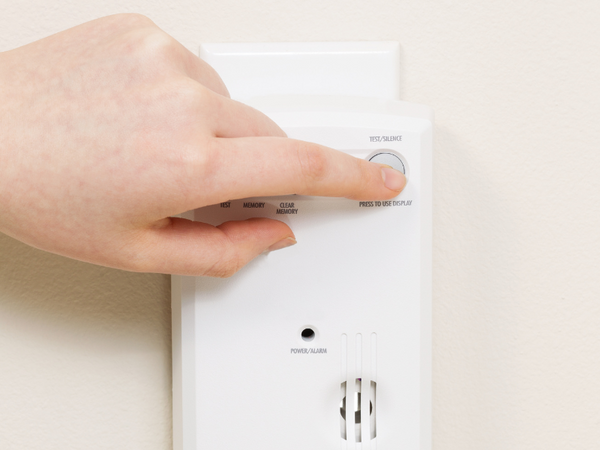
Carbon monoxide comes from anything that burns fuel. Here are the top carbon monoxide sources at home:
Kitchen
Your kitchen can be a hidden source of carbon monoxide, especially if you have gas appliances. A faulty stove, oven, fridge, or even a blocked vent hood can lead to CO buildup. So, never use a BBQ or camp stove indoors. Make sure your vents are clear of snow or debris, and get your gas appliances checked at least once a year by a professional.
Living Room
Fireplaces are cozy, but they can also be risky. A damaged gas fireplace, blocked chimney, or lack of fresh air can cause CO to leak into your home. Avoid using fuel-burning space heaters in closed spaces. Clean your chimney regularly, make sure there's fresh air intake for your fireplace, and keep all vents clear. An annual inspection is a smart move, too.
Laundry Room
Gas dryers can be another source of carbon monoxide if they're not venting properly. Always clean the lint trap and check that the outside vent isn’t clogged. Like other gas appliances, dryers should be inspected and maintained once a year.
Basement
Your furnace, boiler, and water heater are common CO culprits. If they’re damaged or not installed correctly, they can leak dangerous gas. Keep the area around your furnace clear and schedule regular maintenance with a licensed technician to prevent problems.
Garage
This one’s a big one: never run your car or gas-powered tools inside your attached or detached garage, even with the door open. That includes generators, grills, and lawn equipment. Always open the overhead door before starting your car, and get outside right away.
How to Detect Carbon Monoxide at Home
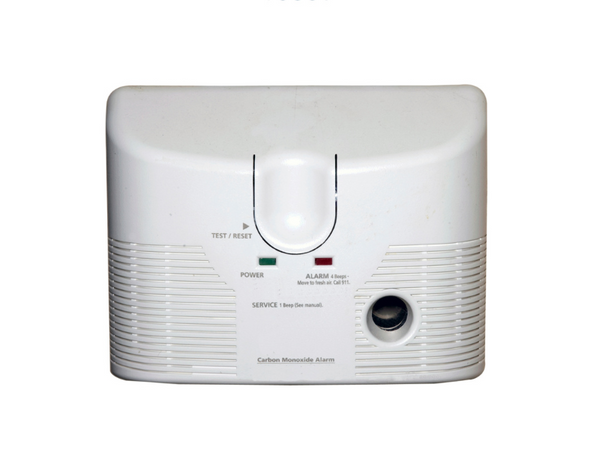
The best way to stay safe from carbon monoxide (CO) is by using a carbon monoxide detector. It works like a smoke detector. When CO levels get too high, it sounds off. Here’s how to detect carbon monoxide at home:
Install Detectors in the Right Places
According to the International Association of Fire Chiefs, you should place at least one carbon monoxide detector on each floor of your home, including the basement. You should also install one inside or near each bedroom for better protection. Learn more about carbon monoxide detector placement here.
Test Your CO Detectors
The National Fire Protection Association (NFPA) says that you should test your CO detectors once a month. The batteries should be changed once a year or sooner if the low-battery indicator goes off.
Get Gas Appliances Checked
Have a professional inspect your furnace, water heater, stove, and other gas appliances every year. These inspections help catch small issues before they turn into dangerous problems.
Watch for Warning Signs
CO leaks sometimes show physical clues. Look out for yellow or orange flames on your gas burners (they should be blue), black soot or stains on appliances, or heavy moisture on nearby windows. A stuffy feeling in the air is also a red flag.
Know the Symptoms
Get out immediately if you or your family suddenly feel dizzy, sick, or confused while inside the house. These are signs of CO poisoning. Once outside, call emergency services.
How to Prevent Carbon Monoxide Buildup at Home

Carbon monoxide (CO) is dangerous, but it’s also preventable. With a few smart habits and some regular maintenance, you can protect your home and everyone in it. Here’s how to stay ahead of it:
Keep Vents and Chimneys Clear
Make sure outdoor vents and chimneys aren’t blocked by snow, leaves, or other debris. A blocked vent can trap carbon monoxide inside your home. Also, never seal off any vent or pipe—it can cause a serious buildup.
Use Appliances the Right Way
Never use outdoor appliances inside. This includes grills, portable stoves, or generators. Don’t use your oven or gas dryer to heat your house either. That’s a big CO risk and a fire hazard.
Check for Signs of Trouble
Pay attention to clues like soot streaks, rusted flue pipes, or a yellow flame on gas appliances (they should burn blue). Excess moisture on windows or weird smells can also be warning signs.
Don’t Run Engines in the Garage
Don’t leave your car, lawnmower, or snowblower running inside the garage—ever. Even if the door’s open, CO can build up fast and seep into your home. Always back out right away.
Install Carbon Monoxide Alarms
Place a CO detector on every level of your home. Test them every month and change the batteries every year. Then, replace the units when they expire, usually within five to seven years.
Get Your Appliances Checked Regularly
Have a licensed professional inspect your fuel-burning appliances every year. This includes your furnace, water heater, fireplace, and stove. They’ll check for damage, clean things out, and make sure everything vents properly.
How to Detect Carbon Monoxide Without a Detector

While the best way to detect carbon monoxide is with a CO detector, you can look for signs that might indicate a leak. First, pay attention to symptoms like headache, dizziness, nausea, or shortness of breath, especially near fuel-burning appliances. These could be signs of CO poisoning.
Next, check for physical signs around your home. Look for soot buildup on appliances, chimneys, or fireplaces. If pilot lights are frequently going out or you notice yellow or orange flames instead of blue, that’s a red flag. Also, excessive condensation on windows or stale air indoors might signal a CO issue.
If you notice any of these signs, it’s important to leave the area and call a professional for inspection.
Can My Phone Detect Carbon Monoxide?
No, your phone can’t directly detect carbon monoxide. Smartphones don’t have the right sensors to sense CO in the air. But you can use your phone to get alerts from other devices that can detect it.
For example, smart carbon Monoxide Alarms can be connected to your phone through apps. When CO is detected, you’ll get a notification on your phone. Some phones also have a sound recognition feature, which can pick up the sound of CO alarms. If this is enabled, you’ll be alerted when a CO alarm goes off.
While your phone can help you stay informed, it’s still best to use a carbon monoxide alarm for accurate detection.
How Do I Use My iPhone to Detect Carbon Monoxide?

Your iPhone can’t directly detect carbon monoxide, but it can alert you if there's a CO emergency. To set this up, you'll need a smart CO detector that works with Apple HomeKit. When you connect the detector to the Home app, your iPhone can send notifications if it detects carbon monoxide.
You can also use the Sound Recognition feature. When enabled, HomePod will listen for smoke or CO alarms, and your iPhone will notify you if one goes off. If you get a notification, tap it to check in and make sure everything’s okay.
You can turn on iPhone’s Sound Recognition by going to your Home app, tapping Home Settings, then Safety & Security, and activating the Smoke & CO Alarm option. This can be a great way to keep an eye on CO levels, even when you're not home.
Can Opening a Window Stop Carbon Monoxide Poisoning?
Opening a window can help reduce carbon monoxide levels by letting fresh air in and diluting the gas. However, it’s not a complete fix. It might slow down the buildup, but it won’t eliminate the danger entirely.
It’s useful if you’re stuck in a room with some CO, but it should not be your main strategy. You still need to get outside for fresh air and call for help. In addition, its effectiveness depends on the window’s size, the CO source's strength, and the room's airflow. If the source is strong or the window’s small, it might not do much.
Conclusion
Carbon monoxide is dangerous, but it’s not unbeatable. With the right detectors, regular maintenance, and a good eye for warning signs, you can keep your home safe. Don’t rely on luck: take action, trust your alarms, and stay alert to anything that feels off. It only takes a few simple steps to protect yourself and your family from this silent threat. Stay prepared, hero!


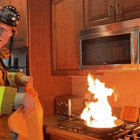 Fire
Fire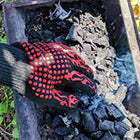 Safety
Safety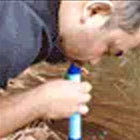 Survival
Survival Protection
Protection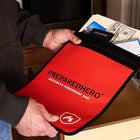 New
New
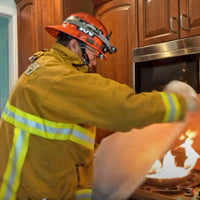 Fire
Fire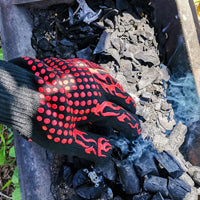 Safety
Safety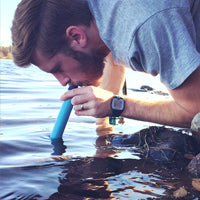 Survival
Survival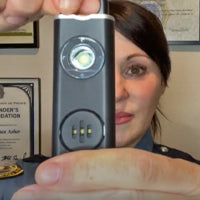 Protection
Protection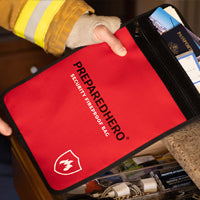 New
New
